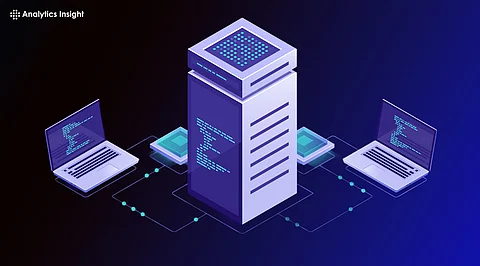

Serverless architecture eliminates the need for server management, enabling automatic scaling and event-driven execution.
Traditional hosting models are being replaced due to the efficiency of serverless solutions, cost savings, and reduced maintenance needs.
Developers can deploy code faster and focus more on innovation as serverless handles backend infrastructure seamlessly.
The web application landscape has witnessed massive changes in recent years. Traditional hosting, which once required complex setup and maintenance of hardware or virtual servers, is giving way to serverless architecture, a revolutionary approach prized for its simplicity, scalability, and adaptability.
This advanced architecture is redefining how websites, applications, and online services are built, deployed, and delivered. This shift enables developers to focus on writing code and delivering value, rather than managing infrastructure, resulting in faster development, lower costs, and increased efficiency.
Serverless architecture in cloud computing provides a seamless way to deploy applications without worrying about infrastructure management. As a result, it is becoming an attractive option for businesses and developers alike.
Serverless architecture is a cloud computing model where, although servers are still used, cloud providers manage them completely. Developers create code and put it into action as small functions. These functions only run when needed. Tasks related to infrastructure, such as scaling and patching, are no longer necessary.
Big cloud providers like AWS, Google Cloud, and Microsoft Azure offer services such as AWS Lambda, Google Cloud Functions, and Azure Functions to support this model.
Also Read: What's Behind Microsoft Azure's Growth Over AWS and Google Cloud?
With traditional hosting, common tasks included setting up servers, handling operating systems, and installing needed software. Scaling also needed help from people or hard scripts. Server failures or sudden traffic increases required constant attention.
However, with serverless, code works when prompted by events. This could be a user clicking a button or a scheduled task. The cloud provider handles scaling on its own, and bills are based on usage instead of a set amount of server space.
One of the top reasons for adopting the architecture is its ability to cut costs. Traditional hosting often charges for a set server size, even if it is not used much. Serverless prices are based on the duration of the function's execution and the amount of memory it consumes.
This pay-as-you-go setup helps lower wasted spending and is very useful for startups and small businesses. It eliminates the need to allocate additional resources to handle traffic spikes, which often result in unused space.
Serverless allows developers to focus more on creating features and less on managing infrastructure. With less backend work, teams can accelerate their development and release cycles. This means new features, updates, and bug fixes can be released sooner.
Web hosting in cloud computing ensures better uptime, faster performance, and easy scalability for modern websites. Instead of stressing over server crashes or operating system updates, focus can be placed on improving the user experience and application performance.
It is easier to handle traffic that cannot be guessed with this kind of architecture. The system automatically adjusts resources based on demand. Whether there is a single user or a million users, the application stays quick.
Most serverless platforms have high availability built in. Cloud providers distribute functions across multiple data centers, ensuring services remain up and running even if one area experiences issues.
Security is another area where the architecture has made significant gains. Since the cloud provider manages the base infrastructure, updates and patches are handled automatically. This helps address common weak spots caused by outdated software or improperly configured servers.
Additionally, since functions run in their own spaces, the likelihood of one function interfering with another is reduced.
Even with its good points, serverless is not perfect. Cold starts may cause brief delays when functions are not in use for a while. Additionally, fixing bugs and monitoring may be more challenging than with standard servers.
Additionally, being tied to a single provider is a concern. Once an application is closely linked to a specific cloud provider's serverless platform, switching providers may require significant changes to the code.
Serverless architecture is likely to become even more common as technology improves. Hybrid models that combine it with traditional methods are also emerging. These provide the flexibility of serverless computing with the control of conventional servers when needed. As businesses continue to seek faster, cheaper, and more scalable ways to create applications, serverless architecture is likely to play a significant role in the future of hosting.
Also Read: OpenAI and UK Seal AI Partnership to Boost Public Services and Infrastructure
Serverless architecture is changing the world of web hosting. By reducing the need for server management, improving scalability, and lowering costs, it offers a compelling alternative to traditional hosting. Although it has its problems, the good aspects make it a good choice for modern software development.
1. What is serverless architecture in web hosting?
Serverless architecture enables code to run without managing any servers, as it is handled entirely by cloud providers.
2. How is serverless different from traditional hosting?
Unlike traditional hosting, serverless hosting handles scaling, updates, and maintenance automatically, eliminating the need for manual server setup.
3. Is serverless architecture cost-effective?
Yes, serverless follows a pay-as-you-go model, charging only for actual usage, which helps reduce unnecessary spending.
4. Does serverless hosting offer better scalability?
Serverless platforms scale automatically based on traffic, ensuring consistent performance during demand spikes.
5. What are the main challenges of using serverless architecture?
Common challenges include cold start delays, complex debugging, and potential vendor lock-in with specific cloud providers.
